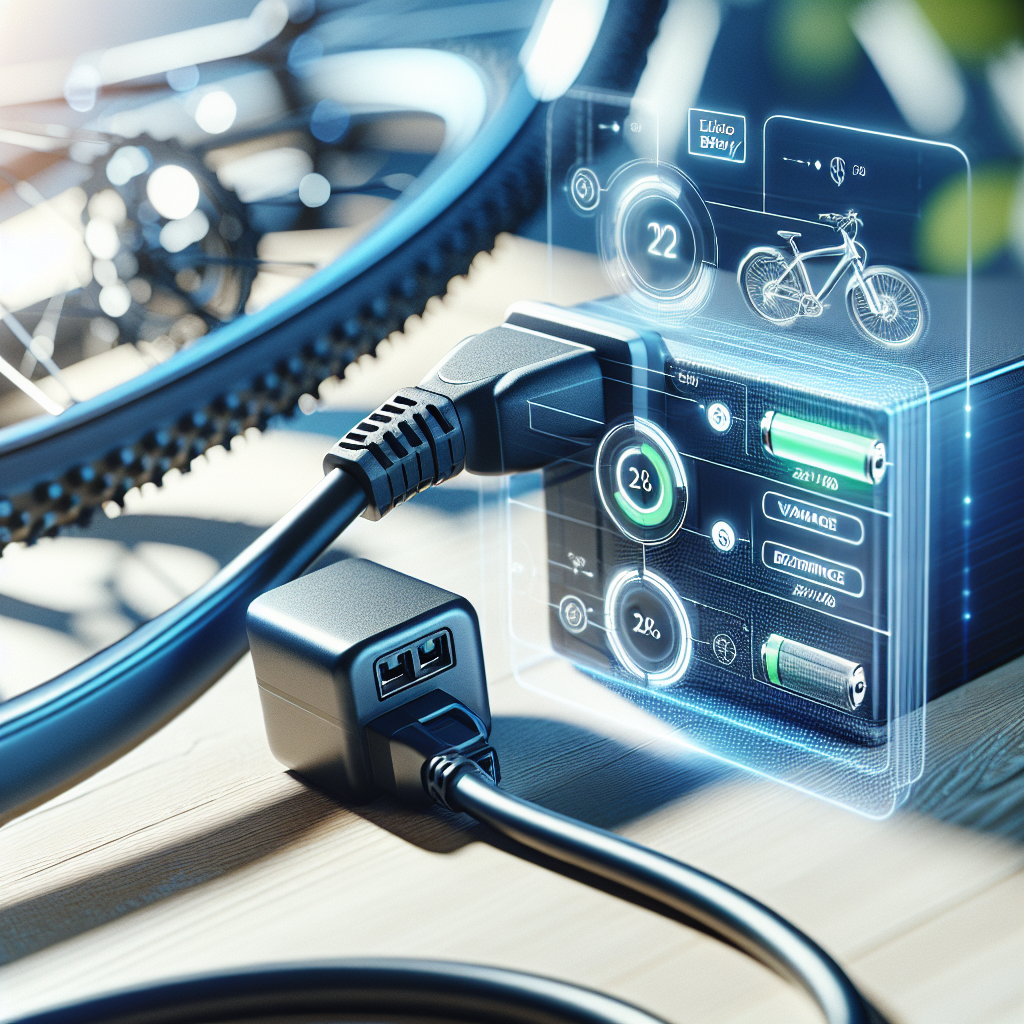Have you ever wondered how long it takes to fully charge an electric bike battery? It’s a common question among electric bike enthusiasts, and in this article, we’ll explore the answer. Charging an electric bike battery is a crucial process that determines the duration and distance you can ride. So, let’s dive in and find out the average time it takes to charge an electric bike battery fully. Prepare to be surprised!
Factors Affecting Charging Time
When it comes to charging an electric bike battery, there are several factors that can influence the time it takes to achieve a full charge. Understanding these factors is important in order to optimize the charging process and ensure you can get back on your bike as quickly as possible. The four main factors that can affect charging time are battery capacity, charger output, battery state of charge, and charging method. Let’s take a closer look at each of these factors to understand their impact.
Battery Capacity
The capacity of the battery plays a significant role in determining the charging time. Electric bike batteries can come in various capacities, and this is usually measured in ampere-hours (Ah). Generally, the higher the battery capacity, the longer it will take to charge fully. This is because a larger capacity battery contains more energy and requires more charging time to reach its maximum charge.
There are different types of batteries commonly used in electric bikes, such as lithium-ion batteries, lead-acid batteries, and nickel-based batteries. Each type has its own characteristics and charging requirements, which we will explore further.

Lithium-ion Batteries
Lithium-ion (Li-ion) batteries are the most common type of battery found in electric bikes. They are lightweight, have a high energy density, and can provide a long range. In terms of charging time, Li-ion batteries generally charge faster compared to other types of batteries. A typical Li-ion battery can take anywhere between 2 to 6 hours to fully charge, depending on its capacity and the charging method used.
Lead-acid Batteries
Lead-acid batteries are an older technology and are less commonly used in modern electric bikes. They are heavier and have a lower energy density compared to Li-ion batteries. Charging lead-acid batteries can take a longer time compared to Li-ion batteries. On average, it can take around 6 to 8 hours to fully charge a lead-acid battery, again depending on its capacity and the charging method used.

Nickel-based Batteries
Nickel-based batteries, including nickel-cadmium (Ni-Cd) and nickel-metal hydride (Ni-MH) batteries, are also less commonly used in electric bikes nowadays. They have a moderate energy density and are known for their durability and long lifespan. Charging time for nickel-based batteries typically falls between that of Li-ion and lead-acid batteries, with a full charge taking around 4 to 6 hours.
Charger Output
The output of the charger is another important factor that affects charging time. The charger’s output determines the voltage and amperage at which the battery is charged. A higher charger output can significantly reduce the charging time, provided the battery can handle it.
Charger Voltage
The voltage output of the charger should match the battery’s voltage requirement. Using a charger with a higher voltage rating than that of the battery can potentially damage the battery. Conversely, using a charger with a lower voltage output may lead to a longer charging time. It is important to always use a charger with the correct voltage output for your battery.
Charger Amperage
The amperage output of the charger determines how quickly the battery can be charged. Higher amperage means faster charging, as more current is being delivered to the battery. However, it is crucial to select a charger with the appropriate amperage rating that is recommended for your specific battery. Charging batteries at a higher amperage than what they are designed for can result in reduced battery lifespan or even damage.
Fast Charging vs. Slow Charging
In addition to the charger’s voltage and amperage, the charging rate can also be influenced by the concept of fast charging versus slow charging. Fast charging refers to charging the battery at a higher amperage, resulting in a shorter overall charging time. On the other hand, slow charging involves charging the battery at a lower amperage, which takes longer but can be gentler on the battery. It is important to consider the manufacturer’s recommendations and guidelines when choosing between fast charging and slow charging.

Battery State of Charge
The current state of charge of the battery can impact the charging time as well. The three main states of charge include an empty battery, a partially charged battery, and an almost full battery.
Empty Battery
When starting to charge an empty battery, the charging time will be longer compared to a partially or almost full battery. This is because the charger needs to replenish the entire capacity of the battery, which takes more time. Charging an empty battery can take anywhere from a few hours to overnight, depending on the battery capacity and the charger’s output.
Partially Charged Battery
If you are charging a battery that is already partially charged, the charging time will be shorter compared to an empty battery. Since the charger only needs to top up the remaining charge, it can take significantly less time to reach a full charge. Charging a partially charged battery can generally be completed within a few hours.
Almost Full Battery
When the battery is already close to being fully charged, the charging time can be relatively short. This is because the charger only needs to add the remaining charge to reach its maximum capacity. Charging an almost full battery should usually take less time than charging an empty or partially charged battery.
Charging Method
The charging method used can also affect the overall charging time. There are three main charging methods to consider – standard charging, fast charging, and trickle charging.
Standard Charging
Standard charging is the most common and widely recommended method for charging electric bike batteries. It involves using a charger with the appropriate voltage and amperage to slowly and steadily charge the battery. While this method may take longer than fast charging, it helps to ensure the battery is charged safely and with minimal risk of damage.
Fast Charging
Fast charging, as the name suggests, is a method that allows for faster charging times. It involves using a charger with a higher amperage output to deliver more current to the battery. While fast charging can significantly reduce charging time, it should be used judiciously and only if the battery and charger are designed to handle this method. Fast charging puts more stress on the battery and charger, which can potentially reduce their lifespan if used excessively.
Trickle Charging
Trickle charging is a slower method wherein the charger provides a very low amperage output to maintain the battery’s full charge. This method is typically used when the battery is not in use for an extended period of time. Trickle charging helps prevent self-discharge and maintains the battery’s state of charge, ensuring it is ready for use when needed. However, trickle charging is not recommended for regular charging as it can be very time-consuming.

Average Charging Times
Now that we have explored the various factors affecting charging time, let’s take a look at some average charging times for different types of batteries.
Lithium-ion Batteries
On average, lithium-ion batteries take around 2 to 6 hours to fully charge. This is true for batteries with capacities ranging from 10Ah to 20Ah, which are commonly used in electric bikes. Larger capacity batteries may require longer charging times, while smaller capacity batteries may charge faster.
Lead-acid Batteries
For lead-acid batteries commonly used in electric bikes, a full charge can take around 6 to 8 hours. This applies to batteries with capacities ranging from 10Ah to 20Ah. It is important to note that larger capacity lead-acid batteries can take even longer to charge fully.
Nickel-based Batteries
Nickel-based batteries usually require around 4 to 6 hours to fully charge. This applies to batteries with capacities between 10Ah to 20Ah. As with the other battery types, charging times may vary depending on the capacity of the battery.
Charging Time Examples
To provide a clearer picture, let’s consider a few charging time examples for different types of batteries commonly found in electric bikes.
Example 1: 36V Lithium-ion Battery
For a 36V lithium-ion battery with a capacity of 10Ah, the charging time can range from 2 to 4 hours using a standard charging method. If fast charging is employed with a charger capable of delivering higher amperage, the charging time can be reduced to around 1 to 2 hours. It is important to refer to the manufacturer’s recommendations for the specific battery being charged.
Example 2: 48V Lead-acid Battery
For a 48V lead-acid battery with a capacity of 20Ah, the charging time will be longer compared to lithium-ion batteries. Using a standard charging method, it can take approximately 6 to 8 hours to achieve a full charge. Fast charging may reduce the charging time to around 4 to 6 hours, but again, it is essential to follow the manufacturer’s guidelines to avoid any potential damage to the battery.
Example 3: 24V Nickel-based Battery
For a 24V nickel-based battery with a capacity of 15Ah, the charging time typically falls within the range of 3 to 5 hours using a standard charging method. Fast charging may shorten the charging time to around 2 to 4 hours, but it is vital to ensure that the battery and charger can handle this method without any adverse effects.

Tips to Reduce Charging Time
While charging times are influenced by various factors, there are a few tips you can follow to help reduce the overall charging time and optimize the charging process:
Ensure Proper Voltage and Amperage
Always use a charger that matches the voltage requirement of your battery. Using a charger with an incorrect voltage output can lead to damage to the battery. Similarly, select a charger with the appropriate amperage rating for your battery. It is crucial to avoid overcharging by using a charger with too high of an amperage, as this can negatively impact the battery’s lifespan.
Maintain Battery State of Charge
Try to avoid fully discharging your battery before charging it. Regularly charging the battery when it reaches a partially discharged state can reduce the overall charging time. Frequent top-ups can also help maintain the battery’s overall health and longevity.
Use the Right Charging Method
Choose the appropriate charging method for your battery based on the manufacturer’s recommendations. While fast charging may seem appealing for shorter charging times, it should be used sparingly to prevent potential damage to the battery. Stick to standard charging for regular use, unless specifically advised otherwise.
Avoid Overcharging
To prolong the lifespan of your battery and improve charging efficiency, avoid overcharging. Once the battery reaches its full charge, disconnect it from the charger to prevent excessive voltage levels that can cause damage. Overcharging not only reduces the battery’s overall lifespan but can also pose safety risks.
Conclusion
The charging time of an electric bike battery depends on several factors, including battery capacity, charger output, battery state of charge, and charging method. By understanding these factors and following some simple guidelines, you can optimize the charging process and reduce the overall charging time. Remember to always refer to the manufacturer’s recommendations for your specific battery and charger to ensure safe and efficient charging. With proper care and attention, you can maximize the lifespan and performance of your electric bike battery. So, get ready to hit the road and enjoy your next adventure!

